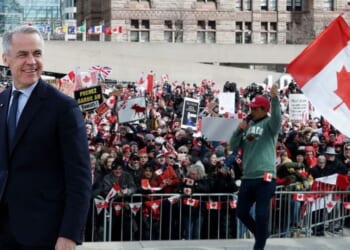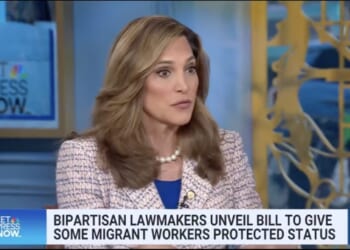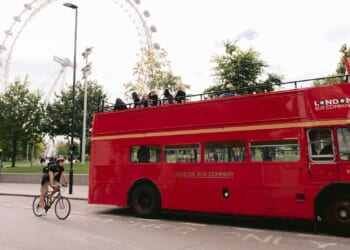A half-year has passed since the Los Angeles area was besieged by wildfires carried by the Santa Ana winds. While Los Angeles Mayor Karen Bass was in Africa, and California Governor Gavin Newsom blamed Donald Trump, who hadn’t even taken office yet, for politicizing the fires, entire neighborhoods went up in smoke.
Although our news cycle-centered attention has shifted to floods and summer storms, the LA residents affected by those devastating fires still face the task of rebuilding, which, thanks to California’s rampant regulations, is a glacially slow process. Insurance paperwork and the permitting process are taking their toll on residents like Len Silvernail, who told local radio station KCRW, “This is our forever home, and it’s been frustration after frustration after frustration.” Reporter Susan Valot adds, “Permitting is only one hurdle. For most, state and local building codes have changed in the decades since many of these homes were originally built, meaning the house has to have changes and extras that insurance covering a like-to-like rebuild does not account for.”
These building codes have been imposed by a bureaucracy more concerned with combating climate change and preserving open space than addressing the needs of property owners who simply want to get on with their lives. So far, only 44 of 890 pending permit applications have been approved.
It’s even worse for those who rented in that desirable area. Writing at the Center Square, Kenneth Schrupp revealed that state and local law dictate that rent-protected housing built prior to 1978, a description that includes many of the rentals in Pacific Palisades, must be replaced by low-income housing. The state of California is providing $101 million to rebuild, with this catch:
“To qualify as Supportive Housing Multifamily Housing, a project must provide at least 40% of its units for the homeless, or individuals who have spent at least 15 days in ‘jails, hospitals, prisons, and institutes of mental disease.’”
Projects gain additional points for being a Transit-Oriented Development built within a quarter mile of a transit station, which includes qualifying bus stops. This program allows for a 50% to 80% density bonus based on the level of transit service, so long as at least 15% of units are set aside for very low- or low-income households.“ Does the phrase “movin’ on up” come to mind?
The “told you so” came from Beege Welborn at Hot Air: “You knew when comedian turned prophet Adam Corolla went on an epic rant from a hotel room desk, a fire refugee himself waiting on word whether he had a home or not, telling you then and there if your home was gone, it was gone for good. Because Mayor Karen Bass, Governor Gavin Newsom, and the soul-crushing machinery of the State of California had the will and the power to ensure you would never rebuild, one way or the other.”
That’s ol’ Governor Hair Gel for you. And he had been trying to be so good, so “moderate” by loosening the screws on California’s oil refineries, addressing the homeless issue, and making the state’s illegal immigrants contribute a modest sum for their healthcare.
Most recently, he had upset his environmentalist friends. “In the past two weeks alone,” note Politico’s Jeremy White and Camille Von Kaenal, “California Democrats have retrenched on environmental reviews for construction projects, a cap on oil industry profits, and clean fuel mandates. Elected officials are warning that ambitious laws and mandates are driving up the state’s onerous cost of living, echoing longstanding Republican arguments and frustrating some allies who say Democrats are capitulating to political pressure.”
The test for Newsom will be how he handles the Palisades disaster in the remaining year and a half of his term, as well as how California responds to having a Republican trifecta in Washington, DC, which will likely be at odds with much of his leadership. Certainly, he will be out campaigning in early primary states, saying he’s trying to rally the troops for the midterms. Yet as our Thomas Gallatin wrote last week about Newsom’s chances:
He realizes that if he seriously entertains the thought of ever residing at 1600 Pennsylvania Avenue, he must engage in leadership that actually works to fix real issues, rather than peddling excuse-laden rhetoric. He must work toward the political middle, which means eschewing the radical and fringe ideologies that Democrats have increasingly catered to.
There’s another element at play in the background. The last thing he wants is a bunch of bad press over the quagmire of red tape and regulations that prevent the wealthy from being able to quickly rebuild their homes after the devastating fires burned out the Pacific Palisades.
That second part will involve dealing with a mayor and local government that hails from a much safer Democrat area, a group who doesn’t have to deal with national ambitions and can cater to the far-left environmentalists without penalty.
As a result, the pace of rebuilding Pacific Palisades could be a good barometer of what Newsom’s national support will look like.














